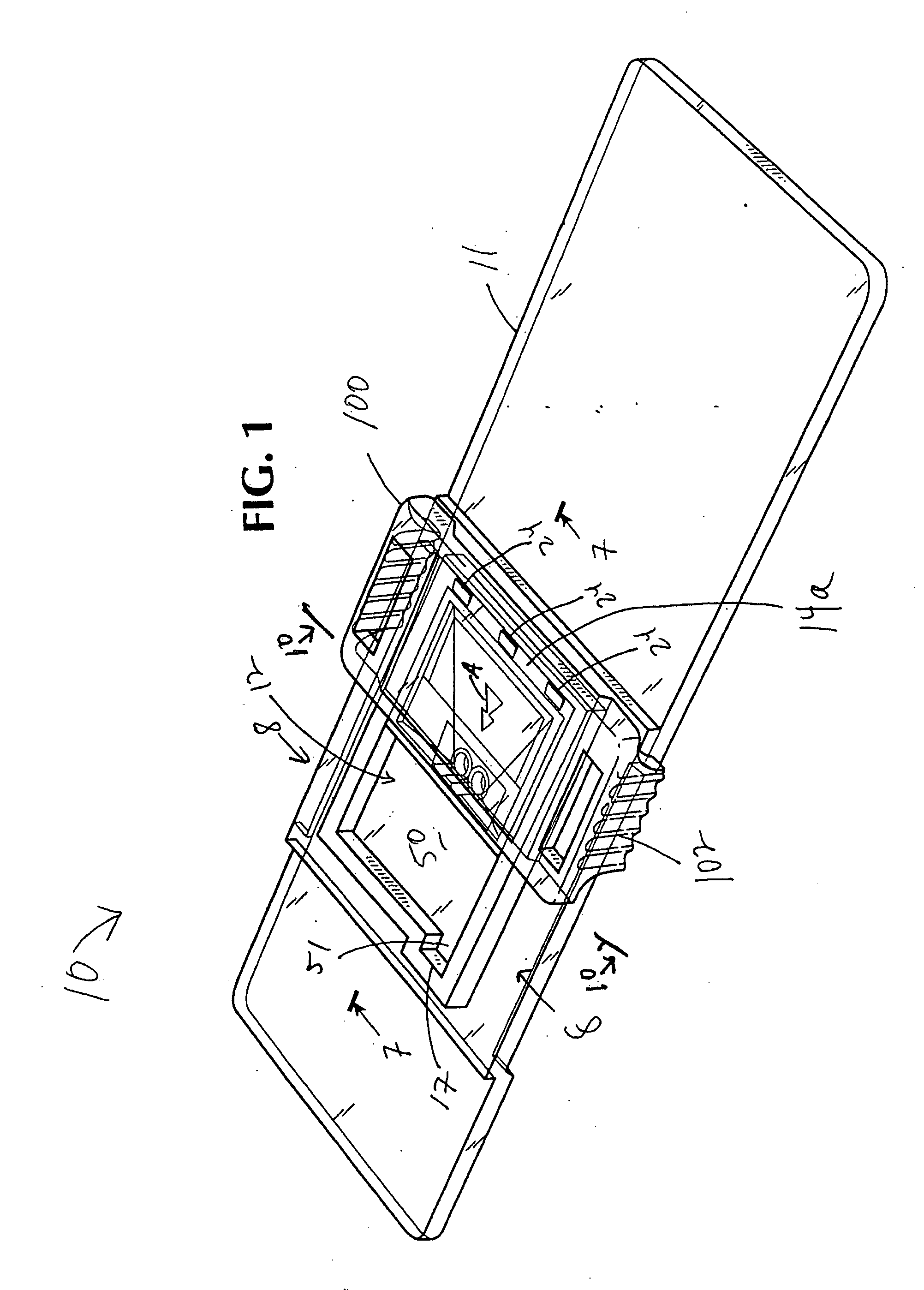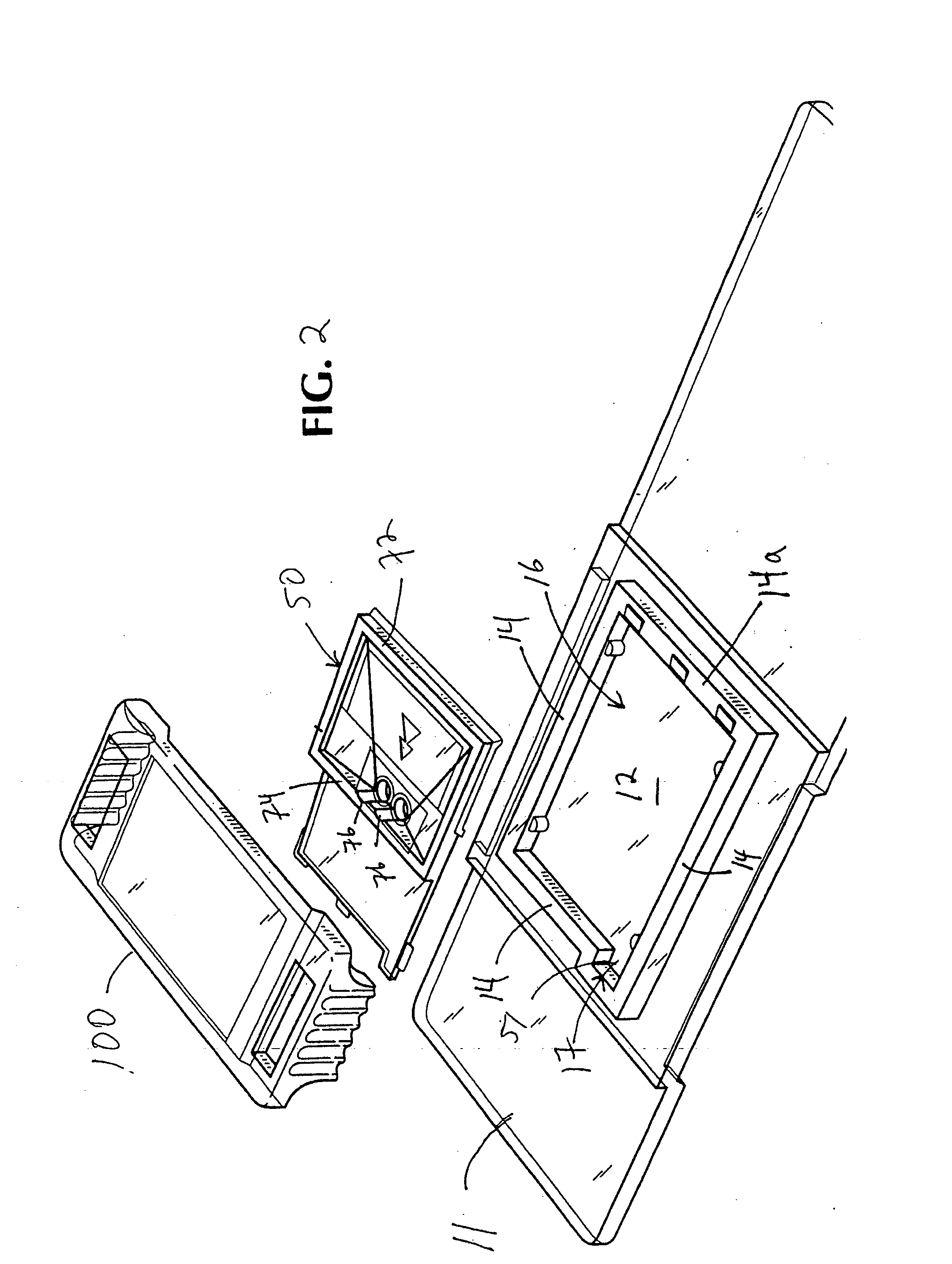Assay devices
a technology of assay and insert, which is applied in the field of assay devices, can solve the problems of affecting the sensitivity of paper strip tests, death and illness, and take several days to obtain, and achieve the effects of reducing the stress of the insert, less capillary force, and reducing the amount of air bubbles in the spa
- Summary
- Abstract
- Description
- Claims
- Application Information
AI Technical Summary
Benefits of technology
Problems solved by technology
Method used
Image
Examples
Embodiment Construction
[0042]FIG. 1 is a perspective view of the assay device 10 in accordance with one embodiment of the present invention. The assay device 10 comprises three pieces: a base 11, an insert 50 within a cavity 12 defined by the base and a lid 100 snapped over the base. FIG. 2 is an exploded view of the assay device 10 of FIG. 1, more clearly showing the base 11, the cavity 12, the insert 50 and the lid 100. FIG. 3 is a top view of the assay device 10. Preferably, the base 11, the insert 50 and the lid 100 are molded in plastic. Preferred materials are discussed below.
[0043]FIG. 4 is a top view of the base 11. As shown in FIGS. 1-4, the base 11 defines a cavity 12 with a sidewall 14 surrounding a major bottom wall 16. The cavity 12 has an open face opposite the major bottom wall 16. In this embodiment, the sidewall 14 comprises four walls connected to form a rectangle. The sidewall 14 may also define a circle, an oval, or any other convenient shape. The shape of the insert 50 preferably mat...
PUM
| Property | Measurement | Unit |
|---|---|---|
| angle | aaaaa | aaaaa |
| distance | aaaaa | aaaaa |
| distance | aaaaa | aaaaa |
Abstract
Description
Claims
Application Information
 Login to View More
Login to View More - R&D
- Intellectual Property
- Life Sciences
- Materials
- Tech Scout
- Unparalleled Data Quality
- Higher Quality Content
- 60% Fewer Hallucinations
Browse by: Latest US Patents, China's latest patents, Technical Efficacy Thesaurus, Application Domain, Technology Topic, Popular Technical Reports.
© 2025 PatSnap. All rights reserved.Legal|Privacy policy|Modern Slavery Act Transparency Statement|Sitemap|About US| Contact US: help@patsnap.com



